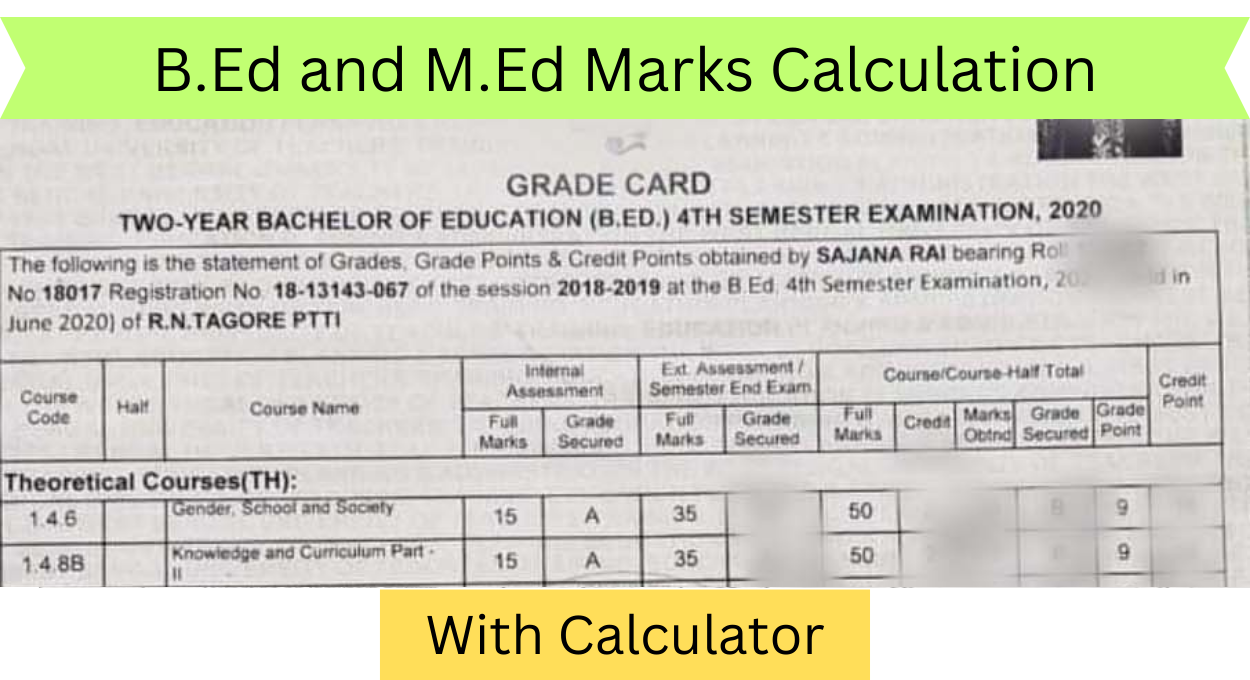B.Ed and M.Ed Marks Calculation: Marks calculation in Bachelor of Education (B.Ed) and Master of Education (M.Ed) programs follows a structured evaluation pattern, encompassing both theory and practical components. Each course in these programs is designed to assess students’ academic knowledge, teaching skills, and practical application of concepts. Understanding how these marks are calculated is essential for students aiming to evaluate their performance effectively.
B.Ed and M.Ed Marks Calculation
Total Marks on the Marksheet
The total marks for B.Ed and M.Ed programs are the sum of the theory and practical marks across all subjects. While individual subject scores are listed, the total marks are prominently displayed at the mid-section of the marksheet for quick reference.
For example:
- Total Marks: 900 (For example)
- Theory Marks: 300 (combined across subjects)
- Practical Marks: 200
- Total Marks: 500
| Marks Calculation For | B.Ed and M.Ed |
| Method | Given Below |
| Post Category | Education |
Theory Marks Calculation

The theory portion constitutes a significant part of the total marks in both B.Ed and M.Ed programs. These marks are typically calculated based on the following:
- Written Examinations:
- Students are evaluated on their performance in semester-end or annual written exams.
- Each subject has a maximum theory score, often ranging from 60 to 80 marks, depending on the curriculum.
- Internal Assessments:
- Marks are awarded for assignments, class participation, and periodic tests conducted during the semester.
- These internal assessments usually contribute 20–30% to the overall theory marks.
- Weightage Distribution:
- The final theory marks are calculated by adding the written examination scores and internal assessment marks.
- For example: If the written exam carries 70 marks and the internal assessment is worth 30 marks, the total theory score is 100.
Percentage Calculator
Practical Marks Calculation
The practical component evaluates a student’s teaching abilities, classroom management skills, and the ability to implement theoretical concepts in real-world scenarios. Practical marks are calculated based on:
- Teaching Practice:
- Students are assessed during their teaching practice or internships in schools.
- Marks are awarded based on lesson planning, delivery, and feedback from evaluators.
- Viva-Voce and Projects:
- Viva-voce (oral exams) and project submissions are integral parts of the practical evaluation.
- These assessments focus on a student’s understanding of teaching methodologies and their application.
- Observation and Attendance:
- Observing peer teaching sessions and regular attendance during internships also contribute to the practical score.
Significance of Marks Distribution
- Theory Marks: Reflect academic knowledge and subject understanding.
- Practical Marks: Indicate a student’s readiness to apply theoretical knowledge in real-life teaching scenarios.
- Total Marks: Provide a comprehensive overview of a student’s performance and are often used for grading or ranking purposes.
For more relevant updates visit dexamresults.com
